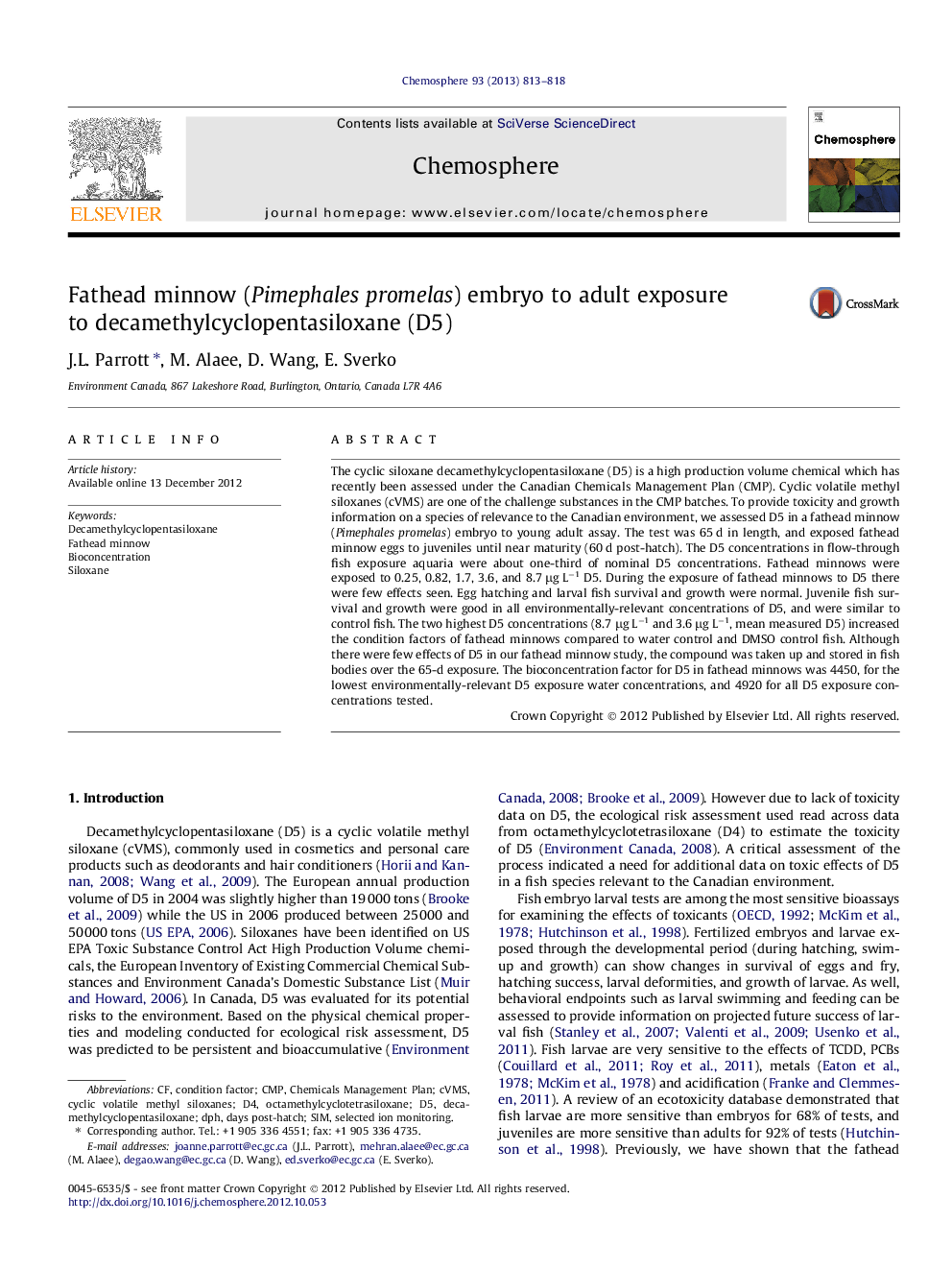| Article ID | Journal | Published Year | Pages | File Type |
|---|---|---|---|---|
| 6309708 | Chemosphere | 2013 | 6 Pages |
Abstract
The cyclic siloxane decamethylcyclopentasiloxane (D5) is a high production volume chemical which has recently been assessed under the Canadian Chemicals Management Plan (CMP). Cyclic volatile methyl siloxanes (cVMS) are one of the challenge substances in the CMP batches. To provide toxicity and growth information on a species of relevance to the Canadian environment, we assessed D5 in a fathead minnow (Pimephales promelas) embryo to young adult assay. The test was 65 d in length, and exposed fathead minnow eggs to juveniles until near maturity (60 d post-hatch). The D5 concentrations in flow-through fish exposure aquaria were about one-third of nominal D5 concentrations. Fathead minnows were exposed to 0.25, 0.82, 1.7, 3.6, and 8.7 μg Lâ1 D5. During the exposure of fathead minnows to D5 there were few effects seen. Egg hatching and larval fish survival and growth were normal. Juvenile fish survival and growth were good in all environmentally-relevant concentrations of D5, and were similar to control fish. The two highest D5 concentrations (8.7 μg Lâ1 and 3.6 μg Lâ1, mean measured D5) increased the condition factors of fathead minnows compared to water control and DMSO control fish. Although there were few effects of D5 in our fathead minnow study, the compound was taken up and stored in fish bodies over the 65-d exposure. The bioconcentration factor for D5 in fathead minnows was 4450, for the lowest environmentally-relevant D5 exposure water concentrations, and 4920 for all D5 exposure concentrations tested.
Keywords
Related Topics
Life Sciences
Environmental Science
Environmental Chemistry
Authors
J.L. Parrott, M. Alaee, D. Wang, E. Sverko,
